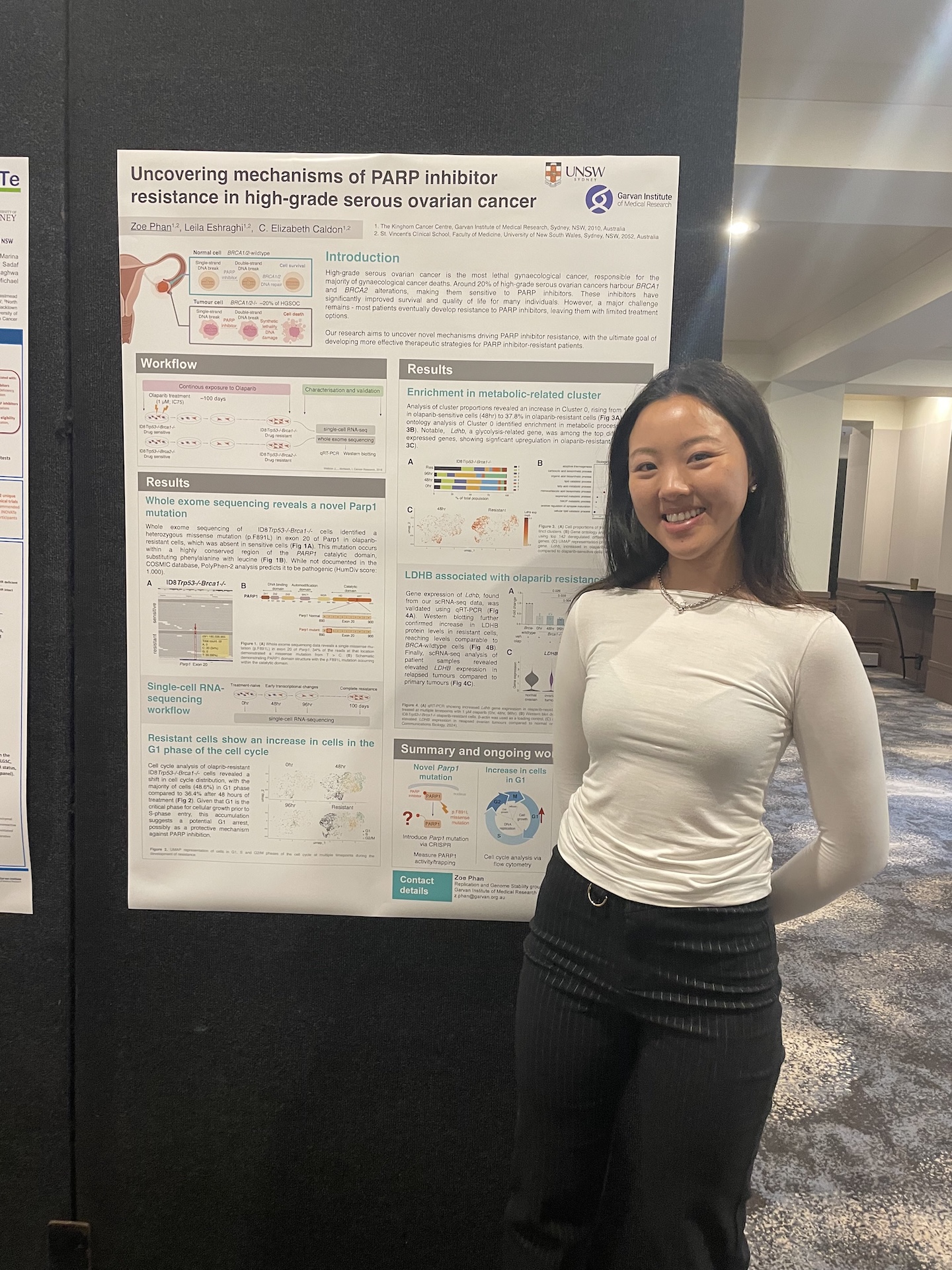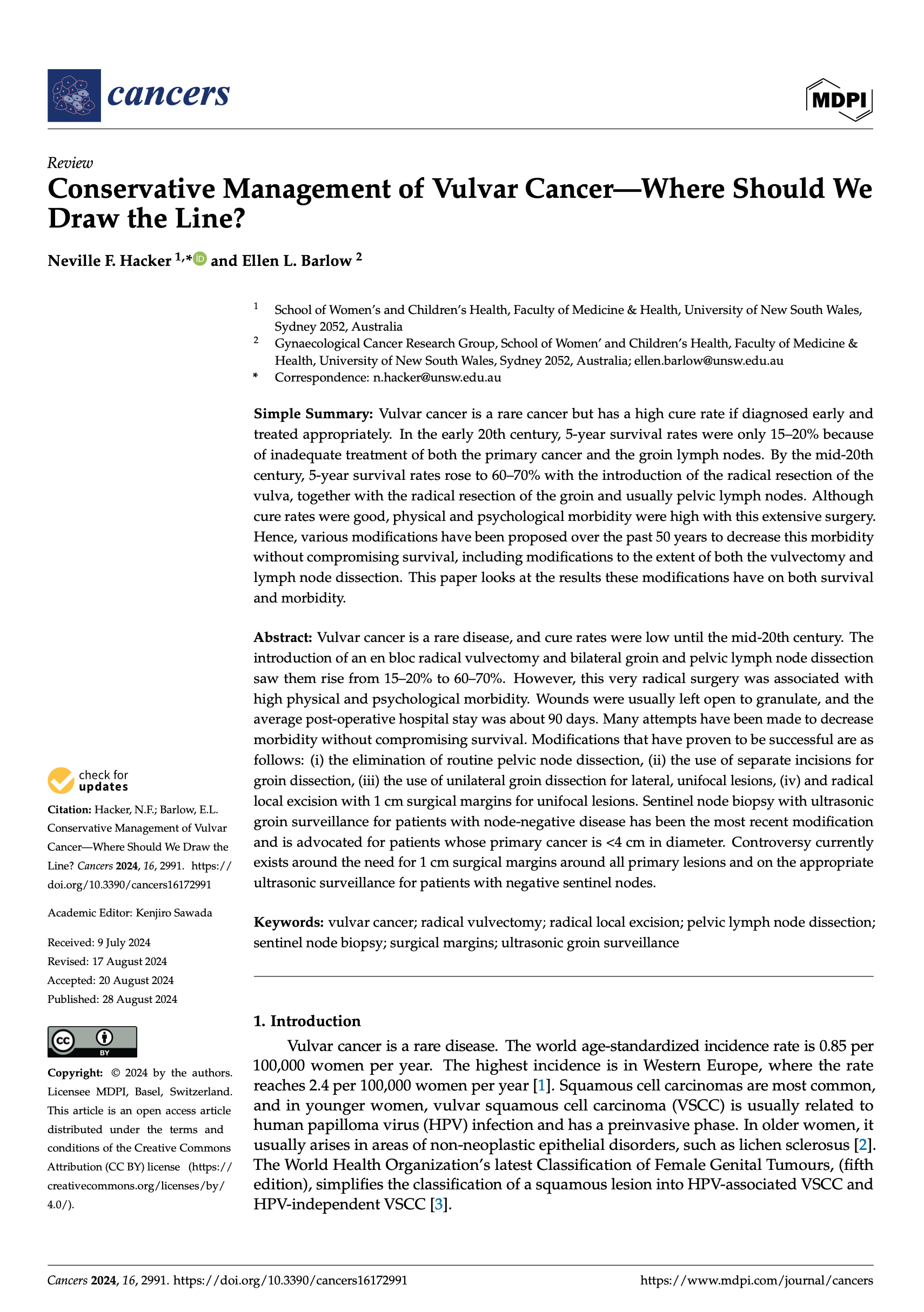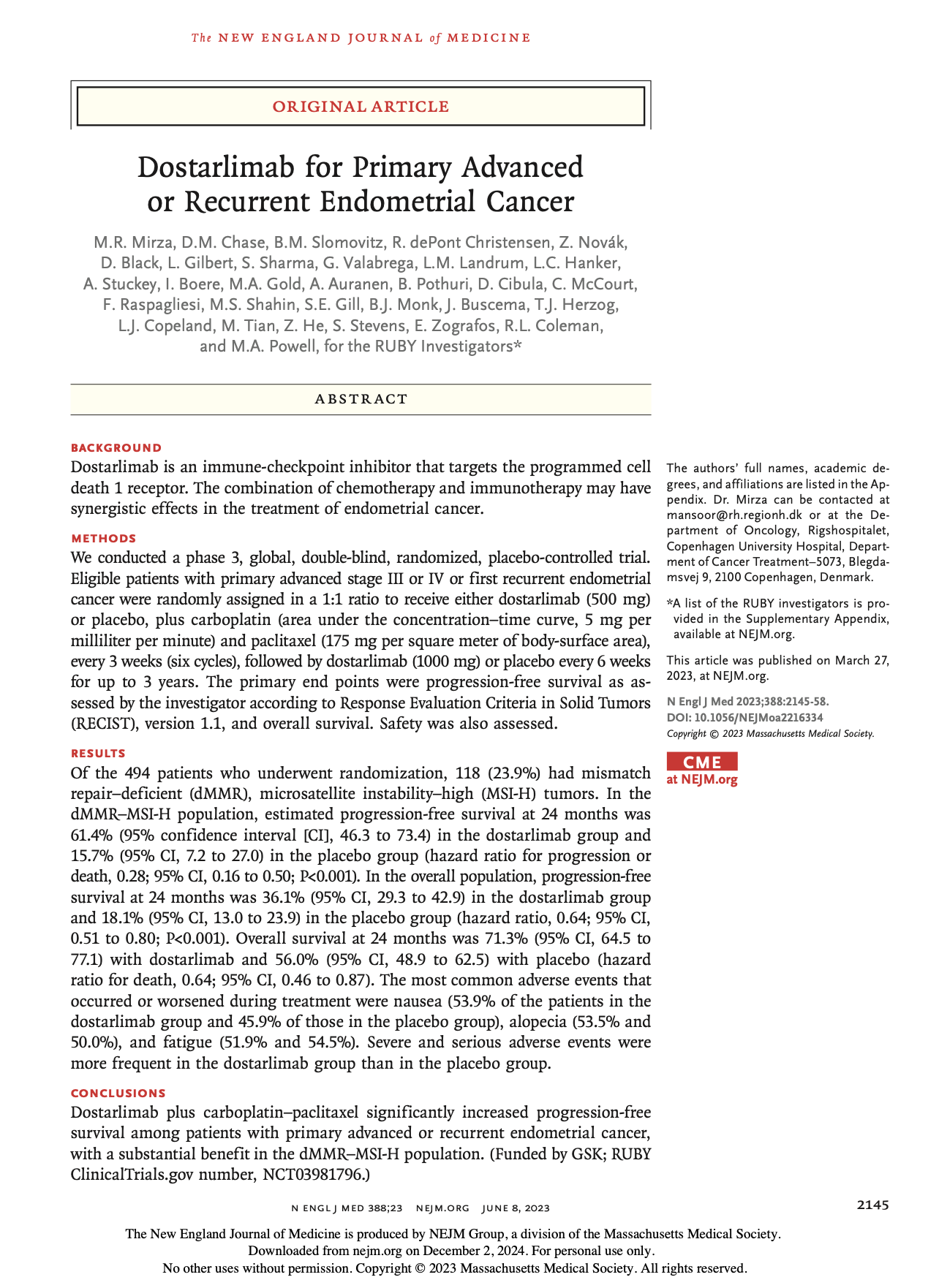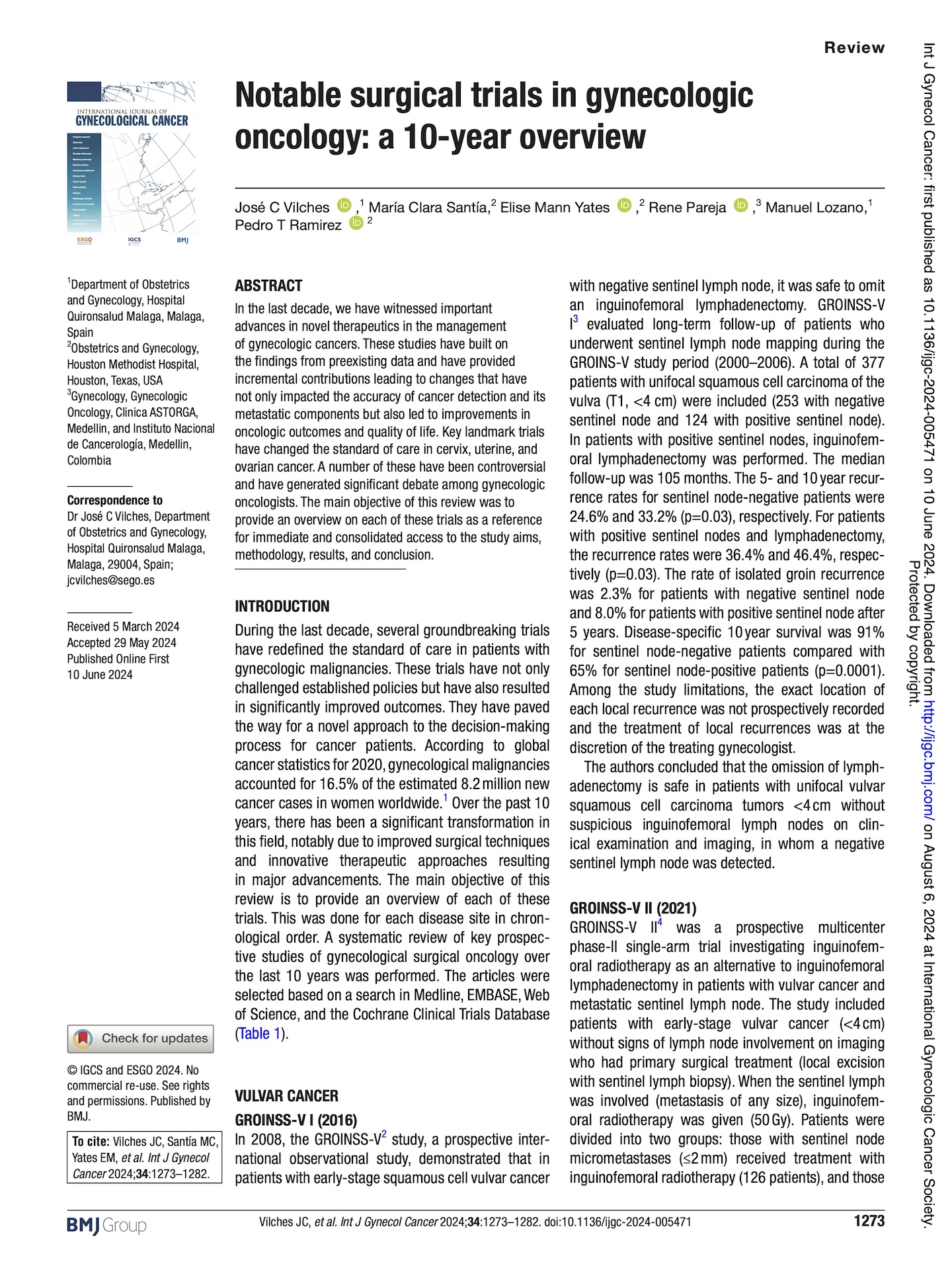Gynae Research
Keep in the loop!
This is your hub to stay up-to-date with all things AGCF.
Image 01: Zoe won the ANZGOG Pre-clinical poster on PARPi research at the ANZGOG Australian Scientific Meeting in March 2025.
AGCF is proud to feature the amazing Dr Zoe Phan and Dr Liz Caldon’s PARPi research team
Love Among the Ovarian Cancer Cells
Dr Zoe Phan, Dr Leila Eshraghi
PARP inhibitors are a class of drugs used to treat certain types of ovarian cancer. However, some tumours develop resistance to these drugs, limiting their effectiveness. This image shows PARP inhibitor-resistant cells forming a surprising heart shape in this single-cell RNA-sequencing data visualisation. This serendipitous image is a reminder that even in the study of challenging diseases, unexpected beauty can emerge from scientific data.
Image 02: Zoe and her colleague, Dr Leila Eshraghi’s PARPi data visualisation, Love among the Ovarian Cancer Cells won the Discovery Garvan Institute of Cancer Research Art of Discovery Prize last year.
University of South Australia Supported Survey invitation by Ms Sally-Anne Boding, PhD candidate to health care professionals: Investigating Attitudes, knowledge, and inclusivity of healthcare providers towards sexual and gender-diverse populations within gynaecological cancer care: A mixed-methods study.
See the link below to view the invitation to take part in the on-line research study, looking at the attitude and knowledge of healthcare providers within gynaecological cancer care.
To review the participant information sheet, please click here.
Targeting Rare Ovarian Cancer with New Treatments
Dr Dane Cheasley, from the Peter MacCallum Cancer Centre, was the first recipient of an AGCF Research Fellowship in 2015. This Fellowship helped Dane to expand his research team and his international collaborators, and this latest paper highlights the great advances his team is making in the fight against low-grade serous ovarian cancer.
Prof Neville Hacker AM MD, Founder & Director, AGCF
To read more, please click here.
Update on A/Prof Liz Caldon’s Research: Identifying Drivers of Resistance to PARP Inhibitors in Ovarian Cancer
Supported by AGCF, Dr Zoe Phan and A/Prof Liz Caldon have recently completed a study on the best models to use to study drug effectiveness in ovarian cancer.
This study investigates PARP inhibitors, a type of cancer treatment, particularly for patients with BRCA1 and BRCA2 mutations, which are often linked to breast and ovarian cancers. While these inhibitors have shown promise in clinical trials, many preclinical studies using cell lines have not translated into successful treatments. The researchers aimed to uncover why some laboratory models do not give the same results as seen in patients. They then set out to find better cell line models to test how sensitive cancer cells are to PARP inhibitors and how they work in combination with other therapies.
The study found that simply having BRCA1 or BRCA2 mutations does not guarantee that cancer cells grown in the laboratory will respond well to PARP inhibitors. Instead, factors like high levels of a protein called PARP1 and fewer changes in the cell’s DNA were more closely linked to how well the cells responded to treatment. They also discovered that existing widely available cell line models often do not accurately represent patient responses.
Read more on Our Projects page here…

Case Study:
Interview with Dr Michelle Harris, gynaecological oncologist, Darwin
As featured in Rare Cancers Australia (RCA) Report: A Rare Cancer Moonshot – Equity For Everyone With Cancer, August 2024.
“Gynaecological oncologist, Dr Michelle Harris, didn’t expect to end up practicing in the Northern Territory (NT). She happened to be up there visiting friends when the pandemic began and she was called upon to manage the hospital’s gynaecological oncology service, as they were no longer going to be able to fly surgeons and patients in and out.”
Read the full article on page 24 & 25 of A Rare Cancer Moonshot – Equity for everyone with cancer.
Conservative Management of Vulvar Cancer—Where Should We Draw the Line?
The 5-year survival for patients with vulvar cancer was about 20-25% until a much more radical approach to the resection of both the vulva and the draining lymph nodes was reported by Stanley Way from Gateshead, in northern England, in 1966. With this more radical approach, the 5-year survival improved to 65%, but with these very wide surgical resections, patients often spent 3 months or more in hospital healing their wounds. In addition, long-term problems included poor body image from the radical vulvectomy and long-term lower limb swelling (lymphoedema) from the extensive removal of lymph nodes. Modifications to the resection of both the primary cancer and the draining lymph nodes began to be reported from the mid-1970s. This paper summarises all the important suggested changes, and questions whether some modifications have gone too far.
There are two medical images in the paper which some may find confronting.
Prof Neville Hacker AM MD, Founder & Director, AGCF
Please find the research paper here.
You can also access a censored version with the medical images redacted here.
Endometrial Cancer and Endometriosis by Professor Neville Hacker, AM MD, Founder & Director, AGCF and Dr Jessica Vet, The Dutch Endometriosis Clinic, Delft
There is often confusion in the general population about the difference between endometrial cancer and endometriosis.
Endometrial cancer is the most common gynaecological cancer in western countries, and its incidence is rising, mainly due to the increasing incidence of obesity. About 3400 new cases are diagnosed each year in Australia, and about 81% of the women diagnosed will be cured of their disease.
Endometrial cancer arises from the lining of the womb (uterus), which is shed each month when a woman menstruates. Because the endometrium responds to the female hormone, oestrogen, during the menstrual cycle, it is not surprising that endometrial cancer is commonly caused by excessive oestrogenic stimulation, such as occurs with obesity, polycystic ovarian syndrome, and in women who have late menopause.
About 90% of women with endometrial cancer present with abnormal vaginal bleeding. As most cancers occur in post-menopause women, bleeding usually occurs early in the course of the disease, and this alarming symptom usually leads to early diagnosis.
Treatment of early cases requires a hysterectomy and removal of both tubes and ovaries. The lymph nodes must be removed in high-risk cases.
Endometriosis, by contrast, is a benign condition in which tissue that resembles the lining of the womb (endometrium), is situated outside of the uterus. It occurs in about 10% of women of reproductive age.
Just as the endometrium inside the uterus thickens when exposed to the female hormone oestrogen during the menstrual cycle, so the endometrial-like tissue outside of the uterus also responds to oestrogen and proliferates, which can cause an inflammatory response, resulting in pain and scarring.
The treatment options for endometriosis can be roughly divided into 3 categories: symptom management, hormonal therapy, and surgery.
Symptom management focuses on symptom relief to improve quality of life and doesn’t treat the endometriosis per se. Management includes pain relief, pelvic floor training, dietary interventions, psychological support, and lifestyle coaching.
Hormonal therapy can be used to reduce symptoms by suppressing oestrogen production. Continuous use of the combined oral contraceptive pill, progesterone-only, or gonadotropin releasing hormone (GnRH) (ant)agonists are all possibilities.
Surgery might be needed when symptom control and/or hormonal suppression are insufficient or when it is medically necessary because of organ damage. The aim is to remove all the endometriotic lesions. In some women, extensive treatment is needed.
Immunotherapy for Endometrial Cancer
Endometrial cancer arises in the lining of the uterus or womb. Although cancers of the uterus can also arise in the uterine muscle, those arising in the endometrium account for 90-95% of uterine cancers. It is the most common gynaecological cancer in Australia, and it is estimated that 3,343.new cases were diagnosed in 2022. It is the fifth most common cancer in women in Australia, after breast, bowel, melanoma of the skin, and lung cancer, and its incidence is increasing because of the obesity epidemic. The 5-year survival rate is 83%
The paper below was recently published in the prestigious New England Journal of Medicine. It reports a highly successful randomised trial involving the immunotherapy drug, Dostarlimab. When used in conjunction with traditional chemotherapy carboplayin and taxol for patients with advanced and recurrent emdometrial cancer, it significantly improved survival. My former Medical Oncologist, Professor Michael Friedlander, commented:
“This is an important and practice changing advance in patients with mismatch repair deficient advanced stage / recurrent endometrial cancer and it is approved and on the PBS.”
Prof Neville Hacker AM MD, Founder & Director, AGCF
Read the research paper here…
Cervical Cancer Awareness Week, 10-16 November 2024
Cervical Cancer Awareness week each year is an opportunity to focus on a disease which is preventable yet causes terrible suffering and death for women, particularly in low and middle income countries, world-wide.
Globally, cervical cancer is the fourth most common cancer in women. In 2022, an estimated 604,000 women were diagnosed with the disease and over 342,000 died from it. About 94% of these deaths occurred in low- and middle-income countries, equating to a survival rate of about 43%.
By contrast, cervical cancer is only the 13th most common cancer in women in Australia, with 851 new cases diagnosed in 2021, the majority of whom have never been screened or are overdue for screening. The 5-year survival rate for cervical cancer in Australia is 74%. Indigenous women in Australia are 2 times as likely to develop cervical cancer and about 4 times as likely to die from the disease compared to non-indigenous Australian women.
Why such as big difference between various countries around the world, and even different ethnic groups within the same country? The difference lies in rates of cervical screening. Cervical cancer begins as a pre-cancer called cervical intraepithelial neoplasia 3 (CIN 3). It is believed that CIN 3 lasts for about 10 years before progressing to advanced cancer, which can spread to other sites and kill the patient. CIN 3 is easily diagnosed by cervical screening and is readily cured by diathermy or other means of destroying the lining of the cervix.
Cervical screening first became available in the 1960s in Australia, with use of the Pap smear, which was named after the Greek physician George Papanicolaou. Since the mid-1980s, it has become clear that almost all cases of cervical cancer are caused by various strains of the human papilloma virus (HPV). Over the past 5-6 years, primary HPV testing, in which a swab is taken from the cervix and tested for the presence of the HPV virus, has replaced the Pap smear as the screening method of choice. This test is more accurate than the Pap smear, and screening is now recommended every 5 years between the ages of 25 and 65 years. Self-testing for HPV is now available, and this has been well received, particularly by indigenous women who have had lower screening rates, particularly those living in remote areas.
A vaccine against the human papilloma virus was developed by Professors Ian Frazer and the late Jian Zhou at the University of Queensland in 2006. Australia became the first country in the world to introduce free vaccination for schoolgirls 12 to 13 years of age under its National Immunisation Program in 2007. The program was extended to include schoolboys in 2013 and is available for women up to the age of 25 years. The current vaccine will eliminate 90% of cases of cervical cancer, so screening remains important. Among young people turning 15 in 2020, 80.5% of girls and 77.6% of boys were fully immunised against HPV.
Clinically, cervical cancer occurs mainly in premenopausal women, who usually have children to care for. Typically, it presents with bleeding after sexual intercourse (post-coital bleeding), but if left undiagnosed, it will erode into the bladder or bowel, and the patient will present with the leakage of urine or faeces from the vagina. Unfortunately, this is a common mode of presentation in low- and middle-income countries. If diagnosed while still confined to the cervix, it can be treated surgically (by radical hysterectomy and removal of pelvic lymph nodes) but once it has spread beyond the cervix, it must be treated by radiation therapy.
I am pleased that the early indications from the Cancer Institute of NSW are that the self-collection HPV test is increasing the number of women being screened for cervical cancer in Australia, including in rural and remote regions, because this will further decrease the incidence and mortality of the disease.
I am also pleased that there is growing interest from developing countries, with widespread support from many governments, public health and non-government agencies, and the International Gynecological Cancer Society, to promote and provide HPV vaccinations and screening to support the reduction of cervical cancer and its impact on women world-wide.
Prof Neville Hacker AM MD, Founder & Director, AGCF, October 2024
Read on for more information on cervical cancer self-screening in Australia, by Assoc Prof Michael Campion; and on cervical cancer research results by Cancer Council Australia.
Lisa’s Survival From Cervical Cancer
My initial diagnosis of cervical cancer came almost too late. I undertook a routine pap smear in 1996 in my then home in New Zealand. When the results came back showing abnormal cells, this wasn’t followed up as it should have been by the specialist I saw.
Were it not for my persistence in seeking another pap smear and a second opinion, my life would have most certainly ended there. As it was, the abnormal cells were high-grade precancerous cells (CIN3) and a tumour had developed in my cervix. When I was diagnosed with the cervical cancer, I knew nothing about it. I didn’t even know what or where my cervix was. This was a crucial lesson for me, and I hope for other women – if you are still not happy with how you are feeling – keep hunting, keep searching. CONSTANTLY ask questions.
Surgery to remove the tumour was done via a radical hysterectomy. Though I was not married at the time, my sudden inability to have children left me shattered. Being told I couldn’t have kids felt like the walls were crushing me. The only saving grace was that I got to keep my ovaries.
I was determined to have children by other means. Together with my husband John (who had proposed when he found out I had cancer and we married in October 1998), we decided to explore surrogacy as an option now that the cervical cancer was behind us. Tragically for us, in 1998 the cancer had come back. What was shocking about it was the way it had come back. I had undergone a laparoscopy years earlier to investigate pelvic pain. It was this procedure that had transferred a cancerous cell from my cervix to my stomach muscle. It was extremely rare I was told. I was immediately operated on to remove the tumour and was set on a path of intense radiotherapy and chemotherapy. I was told that my chance of survival was 50%. The treatment sent me into early menopause, and although my ovaries were still there and nicely tucked away under my rib cage (the gynaecological oncologist moved them to the rib cage to protect them from the radiotherapy), they were no longer working.
John and I attempted surrogacy with my sister and a friend (using my sister’s eggs and friend’s womb). We tried five times but each attempt was unsuccessful. It was two years of trying to have a family.
Three years after going into early menopause, the most extraordinary thing happened to me. In a medical first, my ovaries, like a rusty old lawnmower, started to work again. Miraculously, I was ovulating. The condition of my eggs was not the best (not surprising given the amount of battering my body had received) but those ovaries were releasing eggs. It was surreal, but it meant another chance at the family we desperately wanted. Via a surrogacy arrangement in the USA, we were able to find a surrogate for our embryos (which were fertilised in Australia). The second attempt resulted in the pregnancy of identical twin boys – Joshua Francis and Lucas Kristopher.
Today my family is settled into an ordinary yet crazy life that comes with having kids in school. Some days I feel invincible, while on others I feel vulnerable. I’ve never lost what I call the ‘cancer hangover’. I worry constantly about dying young.
While it is a bad luck story, it is a story of hope, especially for women who are unable to have children as a result of cancer treatments. There are other avenues, the dream of being a mum is not over. Explore your options.
My advice to women is to avoid suffering the consequences of not looking after yourself (and I don’t mean appearances). We worry too much about the exterior and don’t bother with the rest. Get a routine pap smear, get a second opinion if you’re still not feeling right, be persistent and be aware. Another piece of advice is to not forget to nurture your partners and husbands as they are suffering alongside you if you are unwell or so unfortunate to be diagnosed with cancer.
The AGCF website provides vital information about the actual cancer, the relevant anatomy, prevention (ie, getting pap smears), early detection, treatment, clinical trials and the crucial research being done in this space. I really wish that this information had been so readily available when I was going through my experience with cervical cancer.
Natasha tells her story of surviving cervical cancer
In 2018, the AGCF awarded Dr Aime Powell the Cindy Sullivan Fellowship to begin her outstanding research project, titled Aboriginal women at increased risk of cervical cancer incidence and mortality: Quantifying the risk in an era with national prevention programs.
This project investigates why Aboriginal women continue to experience inequitable and poorer health outcomes in the prevention of cervical cancer, despite having access to the National HPV Vaccination Program and the National Cervical Screening Program.
As part of her project, Aime spoke to women about their survival stories. This is Natasha’s.
In 2013, Natasha was diagnosed with cervical cancer after visiting her GP. “It wasn’t so much worrying about myself,” said Natasha. “It was more so what it meant for my family and how it would affect them.”
For her treatment program, Natasha had 5 rounds of chemotherapy and 35 rounds of radiotherapy. That whole time in her life was a blur, and she had never felt so tired. All she could think about was her kids. But going through that experience, Natasha learned the hard way to look after herself.
With 4 out of 5 women who develop cervical cancer in Australia never having had a screening or not screening regularly, it is the most important step for early detection.
Natasha knows that no woman wants to get a pap smear. She put hers off as long as possible. “Lots of times as a mother or a woman, you don’t put yourself first,” she says. “But I think going through that experience I learned the hard way that you need to… you can’t look after your family if you can’t look after yourself.”
Natasha tells other women to “just get it done”. The screening test saved her life.
Watch her video below.
Cervical Cancer
Self-Screening
From 1 July 2022, all women due for their 5-yearly cervical screening test (CST) were eligible for self-collection. The specimen is collected by introducing a small soft swab similar to the swabs used for COVID testing into the vagina.
Participation in the National Cervical Screening Program has fallen in Australia over the past 20 years and was severely impacted by the COVID pandemic. Over a million Australian women eligible for cervical screening are either under-screened or have never been screened. Only around five in 10 women participate in the National Cervical Screening Program (NCSP) at the recommended interval.
READ MORE…
Notable surgical trials in gynecologic
oncology: a 10- year overview
The article below was published in the July 2024 issue of the International Journal of Gynecologic Cancer (Vitches JC et al. 2024;34:1273-1282). It is a summary of important prospective, randomised, surgical trials of various gynaecological cancers which have been published over the past decade, and includes trials of cancers of the cervix, endometrium, ovary and vulva.
Prospective, randomised trials provide the highest level of evidence (Level 1), so are highly sought after. Surgical trials are always more problematic than trials of chemotherapy. With the latter, a definitive dose of the particular drug being studied can be prescribed. With surgical studies, the expertise and effort of the individual surgeon will always be variables which have to be taken into account.
This is particularly true when difficult, complicated surgery is required, such as patients with advanced ovarian cancer. For this reason, the results of the CHORUS and SCORPION trials, which compared initial surgery with initial chemotherapy followed by surgery for patients with advanced ovarian cancer, have been questioned. Those 2 studies reported that patients having initial chemotherapy did just as well as patients having initial surgery. The trial JCOG0602 failed to confirm this, showing that patients having initial surgery had a better survival.
The place of initial (neoadjuvant) chemotherapy in patients with advanced ovarian cancer is being further studied with another trial which requires stricter quality control of the surgery.
Prof Neville Hacker AM MD, Founder & Director, AGCF
Read the research paper here…
PARP Inhibitors
The most important advance in the management of women with advanced ovarian cancer over the past 15 years has been the introduction of a new class of drugs called PARP inhibitors.
PARP stands for Poly-ADP-ribose-polymerase, (where ADP stands for adenosine diphosphate). PARP are a group of enzymes that help repair DNA after it has been damaged. DNA (deoxyribonucleic acid) is the molecule that carries the genetic code within each individual cell in the body and carries all the information necessary to maintain the life and integrity of cells. DNA can be damaged by exposure to ultraviolet light, radiation, environmental toxins and anticancer drugs. It needs to be repaired if damaged or the cells will die.
PARP inhibitors were first shown to be effective in patients with breast or ovarian cancers caused by mutations in the BRCA genes, the most common cause of hereditary breast and ovarian cancers. The proteins produced by the BRCA genes are responsible for repairing DNA damage through a process called homologous repair. BRCA associated cancers have a deficiency in homologous repair (HRD) and rely on other less efficient methods to repair DNA damage. This proves to be their “Achilles heel”. DNA damage is mainly repaired by the PARP enzymes in those cancers with HRD and if these enzymes are blocked by PARP inhibitors, the cancer cells will die.
This is a very good example of what is termed “targeted therapy”, as PARP inhibitors can selectively kill cancer cells which occur in people with inherited BRCA mutations as well as with other causes of HRD. About 50% of high-grade serous and endometrioid ovarian cancers have HRD, either due to mutations in BRCA genes or to a variety of other causes, and these cancers are potentially sensitive to PARP inhibitors. All patients with ovarian cancer are routinely offered genetic testing to identify BRCA mutations, and their cancers are also tested for HRD to identify who is most likely to benefit from PARP inhibitors.
The most effective approach is to use PARP inhibitors as maintenance treatment for 2-3 years after surgery and chemotherapy. This approach has resulted in a paradigm shift in the management of women with advanced high-grade serous and endometrioid ovarian, fallopian tube and peritoneal cancers with HRD. There are two PARP inhibitors approved in Australia, Olaparib and Niraparib.
Since the introduction of PARP inhibitors, the 5-year survival for ovarian cancer in Australia has risen from 42% to 49%.
Neville Hacker AM MD, Founder & Director AGCF
Psychosocial impact of rare and less common cancers (i)
People with rare and less common cancers, including vulvar and vaginal gynaecological cancers, can experience significant psychological distress, including anxiety, depression, fear, isolation, stigma, and guilt.
There is increasing recognition of the psychological impact of any cancer diagnosis, with the peak of psychological distresses, such as depression and anxiety, at the time of diagnosis and the effect continuing throughout treatment(ii). For people with rare and less common cancers, this can be intensified by:
- lack of information and support for their specific cancer type
- lack of evidence and clinical trial data to support decision making
- poor or unknown prognosis with limited treatment options
- financial stress
- isolation due to location, eg. living in rural and remote area
- isolation due to lack of peer support.
Many people report feeling isolated from the broader cancer community, with a sense of being forgotten or left behind compared to those with more common cancers.
Studies have found significantly higher rates of psychological distress, anxiety and depression among rare cancer patients compared to the general population.(iii) This can hinder treatment and recovery, as well as quality of life and wellbeing. Access to appropriate psycho-oncology and mental health support is critical, but often lacking.
- Adapted from Rare Cancers Australia. Report: A rare cancer moonshot: Equity for everyone with cancer, 2024.
- Niedzwiedz CL, Knifton L, Robb KA, et al. Depression and anxiety among people living with and beyond cancer: a growing clinical and research priority. BMC Cancer 2019; 19:943
- Low CE, Loke S, Pang GE, et al. Psychological outcomes in patients with rare cancers: a systematic review and meta-analysis. EClinical Medicine 2024; 72:102631
Comment by Prof Neville Hacker, AM MD, Founder & Director AGCF
Patients suffering from a vulvar or vaginal cancer certainly suffer from feelings of isolation. Even in 2024, these cancers are associated with a stigma, which makes it very difficult for the patient to discuss her cancer with any but her closest family and friends. Psychological support should be provided in all major cancer centres, but unfortunately, this is not always the case.
When I was working at the University of California, Los Angeles (UCLA) in the 1980’s, a young psychologist, Barbara Andersen, now a Professor of Psychology at Ohio State University, approached me to see if I could provide her with patients who had been treated for vulvar cancer. In 1983, we published the first psychometric (objective) analysis of this group of patients (1). Their sexual arousal was reduced to the 8th percentile and body image to the 4th percentile when compared to healthy adult women.
This paper became the stimulus for attempting more conservative operations for vulvar cancers (“radical local excision”) and radical vulvectomy was progressively phased out for smaller, unifocal lesions (2).
- Andersen BL, Hacker NF, Psychological adjustment after vulvar surgery. Obstet Gynecol 1983;62:457-462
- Hacker, N.F.; Berek, J.S.; Lagasse, L.D.; Nieberg, R.K.; Leuchter, R.S. Individualization of treatment for stage I squamous cell vulvar carcinoma. Obstet. Gynecol. 1984, 63, 155–182.
Molecular characterization of low-grade serous ovarian carcinoma identifies genomic aberrations according to hormone receptor expression
Ovarian cancer is the second most common gynaecological cancer in Australia, and there are about 1700 new cases diagnosed each year. Most cases are high-grade serous cancers when examined under the microscope, but about 5% are low-grade serous in nature. These low-grade serous ovarian cancers occur in younger women and are more resistant to traditional chemotherapy. Our first AGCF Research Fellow, Dr Dane Cheasley, has studied the genetic profile of the largest cohort of low-grade serous ovarian cancers in the world to date, in order to try to determine more effective drugs for treatment.
Read Dr Dane Cheasley’s studies here…

Society Statement:
The early history of the International Gynecologic Cancer Society (IGCS) by Neville F Hacker, Peter Heintz, Amodio Denny de Petrillo
The recent death of Charles Paul Morrow caused much sadness among all who knew him. The three co-authors of this paper collaborated with Paul to establish the International Gynecologic Cancer Society (IGCS) in the mid-1980s, and decided that it would be appropriate to document the early history of the Society to honor Paul, and as a reference for future generations. This historical account will cover the genesis of the Society, and its first 10 years of operations.
Read the article here…
Groin Surveillance by Serial Ultrasonography Rather Than Sentinel Node Biopsy or Inguinofemoral Lymphadenectomy for Patients with Vulvar Cancer: A Pilot Study

This paper reports a pilot study which we undertook at the Royal Hospital for Women in Sydney on selected patients with vulvar cancer. The major long term complications of the treatment of vulvar cancer are the psychosexual concerns related to the vulvar resection, and the lower limb lymphoedema associated with the groin dissection. Since the 1980s, wide excision rather than radical vulvectomy has been used for the primary cancer. This has significantly improved, though not completely eliminated, the psychosexual issues, without compromising survival. The majority of patients with vulvar cancer do not have spread to the lymph nodes, but at the present time, virtually all patients get some type of groin dissection. This study aimed to see if serial ultrasonic examinations of the groins could identify those patients who had lymph nodes metastases. These patients could then be treated by groin dissection, while the majority of patients could be spared groin dissection and the associated risk of lower limb lymphoedema.
We studied 3 groups of patients: (i) those with a cancer 2 cm or less in diameter on one side; (ii) those with a large cancer on one side that extended to the midline. These patients had a groin dissection on the side of the cancer and the other side was followed by ultrasound; (iii) patients with small, superficially invasive, multifocal cancers. The groin ultrasound was performed every 3 months for 12 months.
There were 32 patients in the study, and we followed 43 groins with ultrasound. We identified positive lymph nodes in 3 patients (9.4%), and 39 groins (90.7%) were spared from any surgery. Two of the patients with positive lymph nodes were cured with further treatment. Both of these patients had very small nodes that could not be felt clinically. One patient died in spite of further treatment. This patient had an enlarged node in the groin that could be easily felt at the time of her follow-up ultrasound. This strongly suggested that the ultrasounds should be performed every 2 months, rather than every 3 months, so that the positive node could be detected before it became palpable. The overall mortality in the study was 3.1%.
The results of this pilot study were very promising. They would justify a larger randomized trial to determine whether lower limb lymphoedema could be prevented in the majority of selected patients by following the groins with ultrasound, and only operating when a positive node was detected. The ultrasounds should be performed every 2 months for 12 months.
Read the article here…
Fast-tracked cervical cancer screening saving lives in remote West Australian communities
A new cervical cancer screening project in Western Australia’s remote areas is reducing waiting times for testing from weeks to a matter of minutes using new technology.
It’s hoped the method will be one day expanded across the nation.
WA’s Country Health Service Obstetrics and Gynaecology head Jared Watts said early detection was crucial.
“Women can do their own test and it takes away that embarrassment, takes away the pain and discomfort,” he said. “If we do detect the changes in the cervix early it is very preventable.”
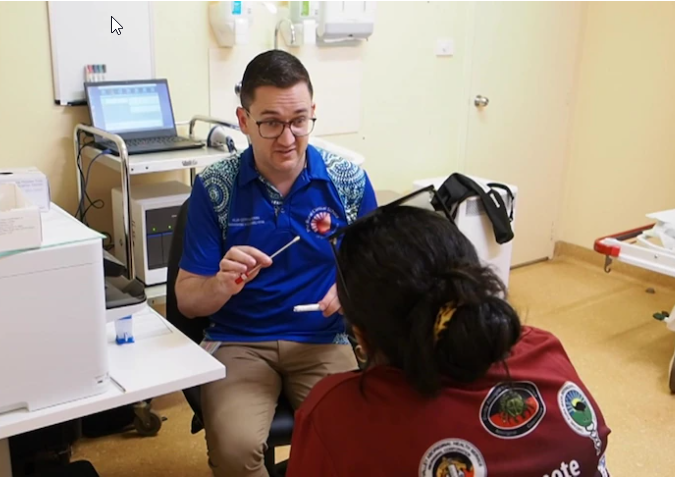
Cancer Research Visit
AGCF Prof Neville Hacker and former CEO Kim Downes meet with Dr Caroline Ford and her team at the Lowy Cancer Research Centre to discuss ovarian cancer and endometrial cancer research. AGCF with the assistance of the Mazda Foundation provided funding for Dr Ford’s teams endo cancer research.


Rural Women’s Health
It may be surprising to know there are eight Gynae cancers, and that every two hours an Australian woman is diagnosed with a gynae cancer.
Women with gynae cancer in rural areas often have a great deal of trouble accessing an accurate early diagnosis and treatment. In particular, women living in outer regional, remote or very remote areas may have difficulties accessing gynae health care due to distance and the limited availability of health services, and they often lack practical and emotional support. Much is being done to extend access to tele health cancer support services and practitioners, including oncology nurses, however many services are fragmented or in major city centres.
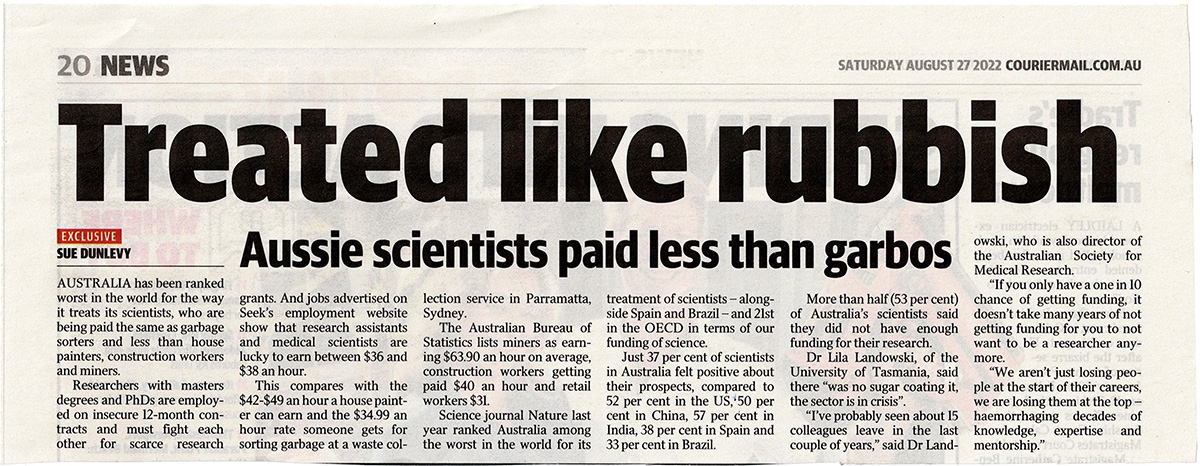
Who we are
We are the Australian Gynaecological Cancer Foundation. The only organisation that focuses on funding laboratory research into all eight gynae cancers.
Subscribe to our newsletter
Get in touch
Where to find us:
1/1 Jamison Street, Sydney NSW 2001
For general enquiries:
telephone: +61 2 8235 2606
email: info@agcf.org.au
Together, we’re giving women hope.
Donations of $2 or more are tax deductable in Australia.
ABN: 17 152 685 295
© Australian Gynaecological Cancer Foundation | Privacy Policy


